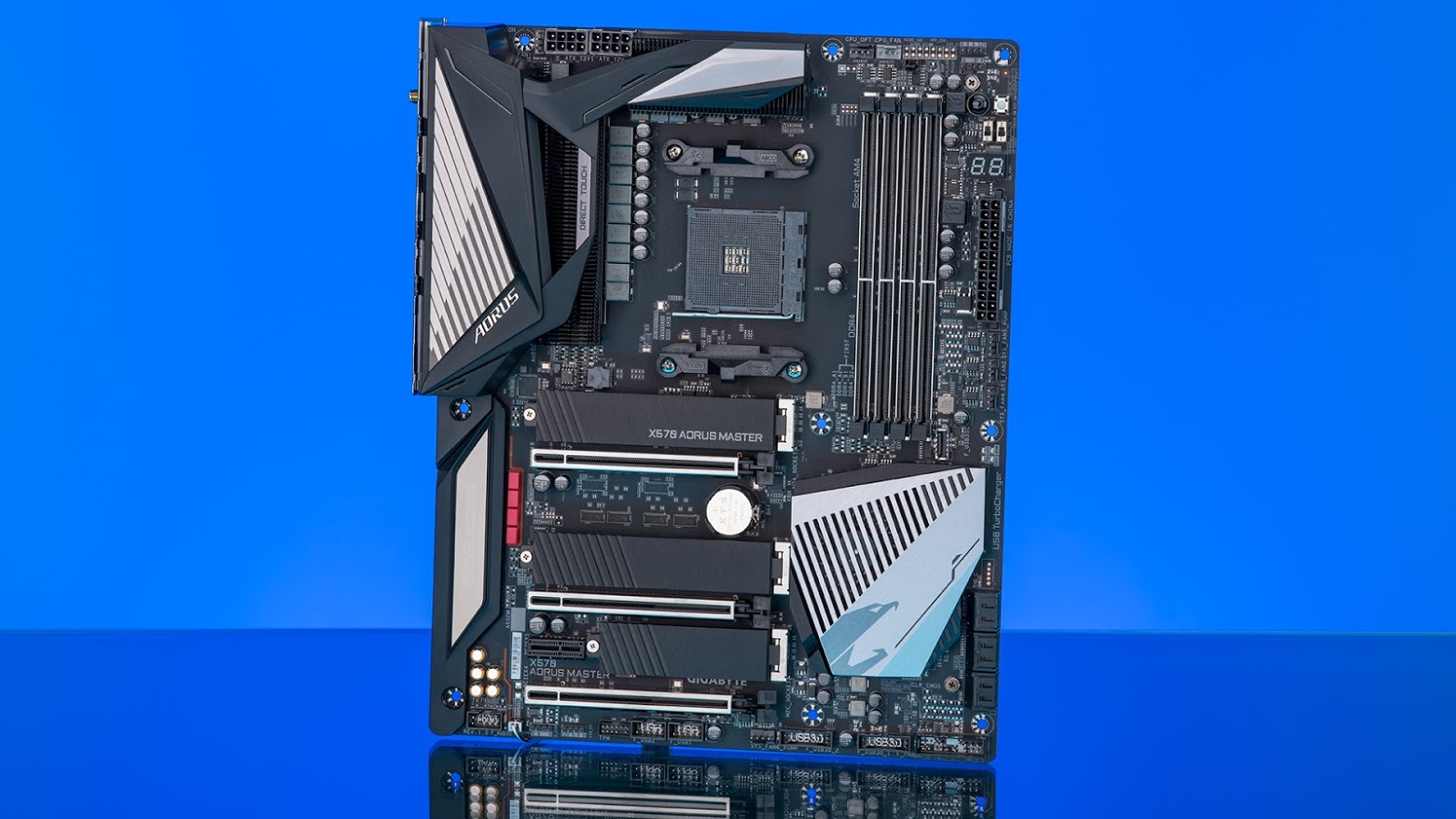
The X570 craze is in full swing, as PC builders all over are excitedly scouring the internet for each manufacturer’s take on the new AMD chipset. GIGABYTE, just like many other major manufacturers, has launched several new motherboards to take advantage of the new Ryzen 3000 CPUs and X570 chipset. AORUS, the company’s gaming brand, is leading the charge with several different versions of X570 boards, each serving different budgets and purposes. Our personal favorite, the AORUS X570 MASTER, is a board to be proud of, as it offers top-of-the-line features, the token AORUS design, and cutting edge tech synonymous with AMD’s new CPUs for a great price.
It’s not nearly as expensive as the AORUS flagship board, the X570 XTREME, but, short of enthusiasts with big budgets, this is the board we feel will draw the eye of most PC builders, especially AMD fans. The MASTER currently sits at $359.99 on Newegg, but before you decide whether or not to buy it, let’s break down what’s under the hood.
As a teaser of sorts, we’ll just say that GIGABYTE has a lot to be proud of on this one.
14-Phase Power Design and Architecture
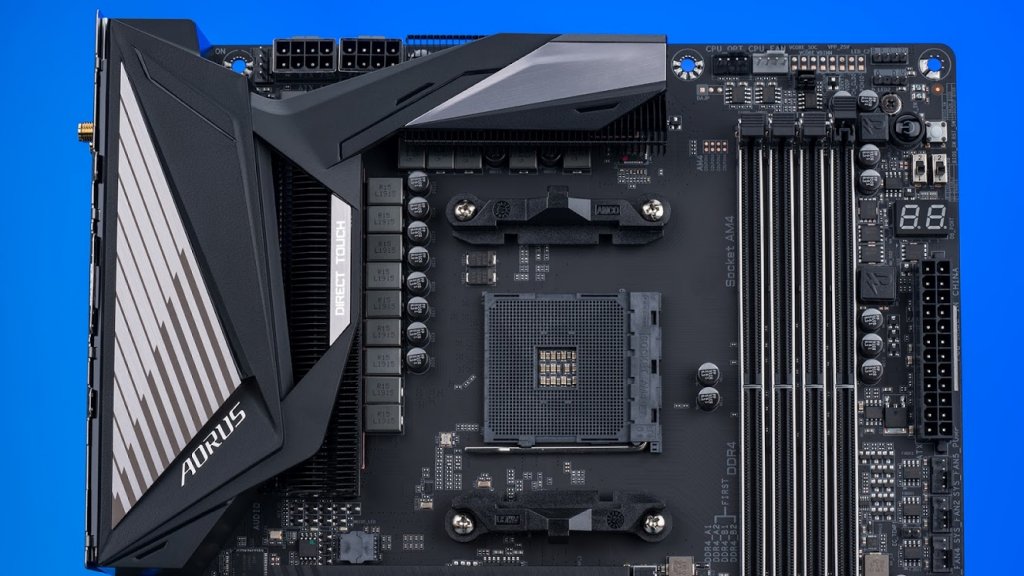
The AORUS MASTER’s power design is one of the best on the market.
It uses an Infineon multiphase PWN controller and 14 vCore and SOC phases, each with IR 3556 PowlRstage MOSFETs. These MOSFETs are capable of 50A from each phase, reaching a grand total of 700A. For those that don’t speak electronic jargon, that’s a lot of very efficient power. The new AMD Ryzen processors need as much power as they can get, so this cutting edge power design will go a long way with this chipset in particular.
GIGABYTE’s direct power architecture was designed with one thing in mind—funneling a ton of energy where it needs to go, with as much efficiency as possible. Using that 14-phase design at its best, with the lowest possible voltage ripple and without the use of a phase doubler, GIGABYTE claims that this motherboard runs at four percent higher efficiency than traditional parallel power designs.
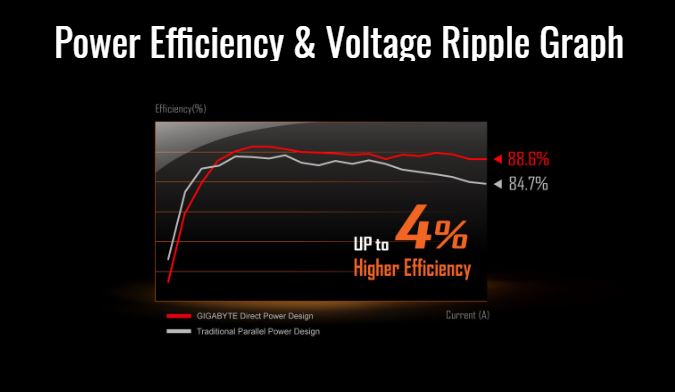
The PCBs on the board are layered with twice the copper of a normal PCB, as well, which provide a lot of benefits for cooling, overclocking, impedance, and more.
Thermal design
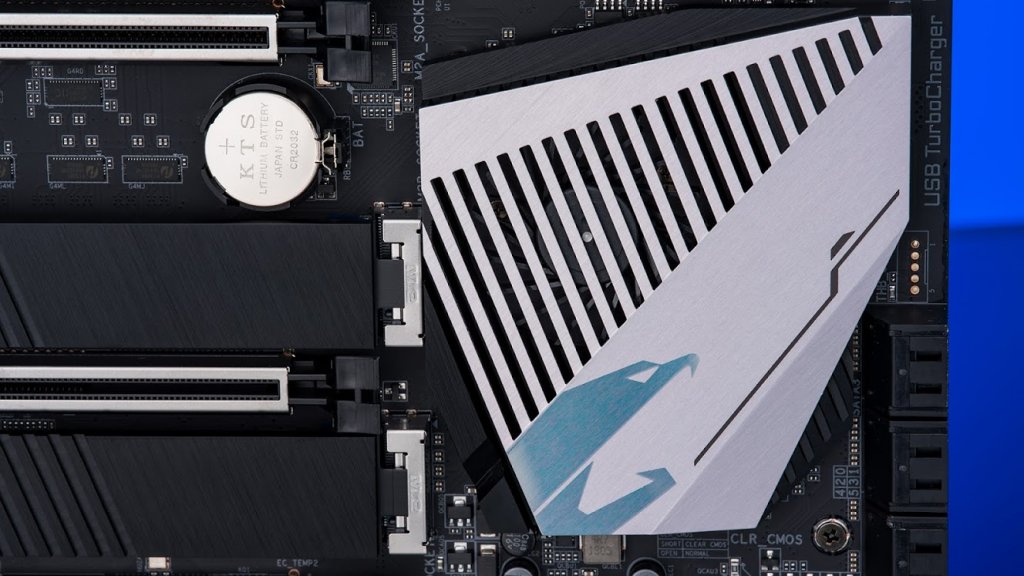
One of the biggest claims from the MASTER board are its 30 percent lower MOSFET temperatures than other boards. Whether you’re a gamer or some other form of PC-building enthusiast, that’s a major thing to say.
So how does AORUS accomplish that goal? The simple answer is that its advanced thermal design handles it, but, as with anything hardware-related, there’s a lot more involved than just that.
For starters, the thermal design of the MASTER is highlighted by a massive Fins-Array heatsink, one of the most critically acclaimed motherboard heatsinks available. On top of that, there’s a heatpipe, a thermal baseplate, and a (fortunately) quiet motherboard fan. No one likes built-in fans that are loud enough to throw off the serene quietness of a well-built rig, so you’ll be happy to know that this one won’t make your motherboard sound like a jet engine.
The magnum opus of the thermal design is that Fins-Array heatsink, which, according to GIGABYTE, increases heat dissipation by 300 percent when compared other similar heatsinks. The heatpipe helps transfer heat from the MOS fins, and conductivity pads transfer more heat, too.
PCIe 4.0 design
Just like many of the new X570 motherboards out there now, this MASTER board is fully designed for PCIe 4.0, including PCIe 4.0 slots, M.2 connectors, B-clock Tuning IC, and high flexibility.
PCIe 4.0 is the next generation of PCI technology, although it isn’t quite the norm yet. More and more motherboards and other tech, like SSDs, are starting to become more prevalent, but it’s not quite the standard.
The new tech offers superior bandwidth compared to previous PCIe technology, which means higher read/write speeds on SSDs, better slot signal stability, and its even backwards-compatible with PCIe 3.0. In theory, the new PCIe 4.0 M.2 slots should support bandwidth up to twice as high as PCIe 3.0.
Each of the PCIe slots are protected by thermal guards, too. These guards prevent throttling and bottlenecks on M.2 SSDs by dissipating heat even further than the board’s already-impressive thermal system.
Audiophile-level audio and AORUS-brand style
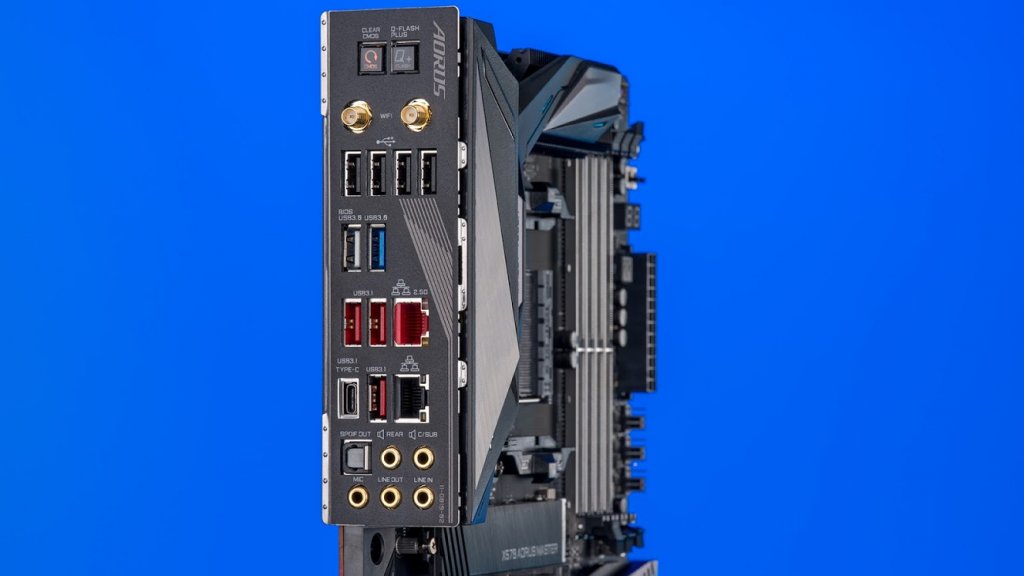
To some, style and audio are just as important as thermal design and power efficiency. Fortunately for those people, this board has both.
Well, technically, most AORUS boards come with style. GIGABYTE designs them with sleekness in mind. Enthusiasts and gamers want their rigs to look good. Some want to show them off, others just want to feel that sense of pride when they look over at their tower in the middle of a work or gaming session. AORUS seems to reliably fit that bill.
On top of the sleek covers and connectors that will easily go along with any hardware you plug into the board, it also comes loaded with RGB and customization. It even allows for control of external LED strips, for the truly extra among us.
The board’s audio system should please any audiophile, too. It’s high quality (32bit, 192KHz), loaded with Nichicon find gold capacitors, and a smart headphone amp.
For more information on the rest of Gigabyte’s impressive X570 motherboards, check out the Gigabyte X570 store page on Newegg. And for a closer look at some of these boards, you can watch our video on Newegg Studios.

